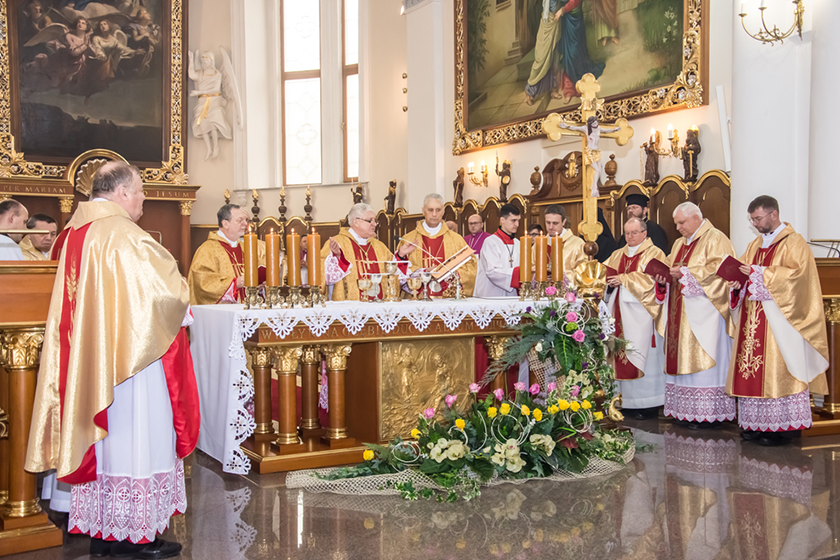A Complete Fire Safety Checklist For Your Church Building

When managing a church building, safety should always be at the forefront of your priorities. Among the various responsibilities, ensuring that your place of worship is protected from the risk of fire is paramount.
A well-structured church fire safety checklist is essential for safeguarding your congregation and the sacred property. This article will guide you through the key elements of such a checklist, helping you implement robust fire safety measures effectively.
Understanding the Importance of a Fire Safety Plan
A fire safety plan is more than just a precaution; it is a critical component of your church’s overall safety strategy. By having a clear and actionable plan, you can mitigate the risks associated with fire and ensure the swift and safe evacuation of everyone in the building. The first step in creating this plan is to assess the specific fire hazards within your church building.
Conducting a Comprehensive Fire Risk Assessment
Every fire safety checklist should begin with a thorough fire risk assessment. This process involves identifying potential fire hazards, evaluating the effectiveness of existing fire prevention measures, and determining the safest evacuation routes.
When conducting the assessment, consider all ignition sources within the building, such as electrical wiring, heating systems, and open flames. It’s essential to involve a responsible person who is knowledgeable in fire safety, as their expertise will help ensure that no detail is overlooked. After the assessment, document all significant findings and implement remedial measures as needed.
Additionally, it’s wise to consult with your local fire department. They can provide valuable insights and recommendations tailored to your building’s unique needs, ensuring that you are fully prepared for any emergency.
Ensuring Proper Building Construction and Maintenance
The construction and maintenance of your church building play a vital role in fire safety. For instance, clearly visible building numbers are crucial for quick identification by emergency responders. This seemingly small detail can make a significant difference in the speed of their response.
Regular inspections of the church’s electrical components are also essential. Over time, electrical systems can deteriorate, increasing the risk of fire. A certified electrician should perform these inspections and carry out any necessary maintenance to keep the system in safe working order.
Moreover, all doors, halls, stairs, and emergency exits must be kept free from blockages. Ensuring clear passageways is not only a legal requirement but also a crucial factor in facilitating a swift evacuation during a fire.
Installing and Maintaining Fire Detection and Alarm Systems
Fire detection and alarm systems are the backbone of any church fire safety checklist. These systems are your first line of defense, providing early warning and allowing for timely evacuation.
Start by installing smoke detectors and carbon monoxide detectors throughout the building. These devices should be strategically placed to cover all areas, including less frequently used spaces like basements and attics. Sprinkler systems are also an important addition, offering an automatic response to extinguish fires before they spread.
Maintaining these systems is just as important as installing them. Regular checks and servicing are essential to ensure that all components function correctly.
Consultation with the local fire department can help you determine the appropriate frequency for these maintenance tasks, ensuring your systems are always ready in case of an emergency. Keep detailed records of all maintenance activities to demonstrate your commitment to safety.
Ensuring the Availability of Fire Extinguishers and Other Equipment
Having the right firefighting equipment readily available can make all the difference in a fire emergency. Fire extinguishers, in particular, are a critical tool that should be accessible and in good working condition.
Place fire extinguishers in key locations throughout the church, ensuring they are clearly marked and free from obstruction. It’s important to regularly inspect these extinguishers to confirm they are fully charged and ready for use. If any extinguisher is found to be faulty, it should be serviced or replaced immediately.
In addition to fire extinguishers, consider the availability of other firefighting equipment, such as fire hoses and blankets. Ensure that your staff and volunteers are trained in the proper use of this equipment, as this knowledge can help contain a fire before it escalates.
Developing and Practicing an Emergency Evacuation Plan
An emergency evacuation plan is a vital element of your church fire safety checklist. This plan should outline the safest and quickest routes to exit the building, taking into account the needs of all congregants, including those with mobility challenges.
Start by creating a detailed evacuation map that highlights all exits and assembly points. This map should be displayed in prominent locations throughout the church. Once the plan is in place, it’s essential to conduct regular fire drills to familiarize everyone with the procedures. These drills should be held at least once a year and should involve all staff, volunteers, and congregants.
In addition to drills, hold annual fire safety meetings to review the evacuation plan and update it as needed. This is also a good time to discuss the location of fire extinguishers and the proper use of firefighting equipment. Establish a designated meeting point outside the building where everyone can gather after evacuation, ensuring that all individuals are accounted for.
Proper Storage and Waste Disposal Practices
Storage and waste disposal might not be the first things that come to mind when thinking about fire safety, but they play a crucial role in preventing fires. Ensuring that items are stored correctly and waste is disposed of properly can significantly reduce fire risks.
Each department within the church should have designated storage areas that are kept organized and free from clutter. Avoid storing combustible materials near heat sources or in areas that could block escape routes. Regularly check these storage areas to ensure compliance with fire safety standards.
Proper waste disposal is equally important. Ensure that trash receptacles are available throughout the church and are emptied regularly. Outdoor trash containers should be placed at a safe distance from the building to minimize the risk of fire spreading from external sources.
Ongoing Commitment to Fire Safety
Fire safety is not a one-time task but an ongoing responsibility that requires regular attention and commitment. As part of this commitment, it’s important to stay informed about the latest fire safety regulations and best practices. This includes attending fire safety seminars, consulting with fire safety professionals, and continually reviewing and updating your fire safety plan.
Encouraging a culture of safety within your church is also essential. Make fire safety a topic of discussion at staff meetings, and encourage everyone to take an active role in maintaining a safe environment. By fostering a sense of shared responsibility, you can ensure that your church remains a safe place for all who gather there.
Partner with Us for Comprehensive Fire Safety
Fire Safety Alarms understands the unique challenges that come with ensuring the safety of church buildings. With over four decades of experience, we are dedicated to providing top-notch fire alarm services, fire alarm systems, and emergency management and services.
Our team of experts is here to help you develop and implement a comprehensive fire safety checklist tailored to your church’s specific needs. Let us assist you in safeguarding your congregation and property with the highest level of care and professionalism.
